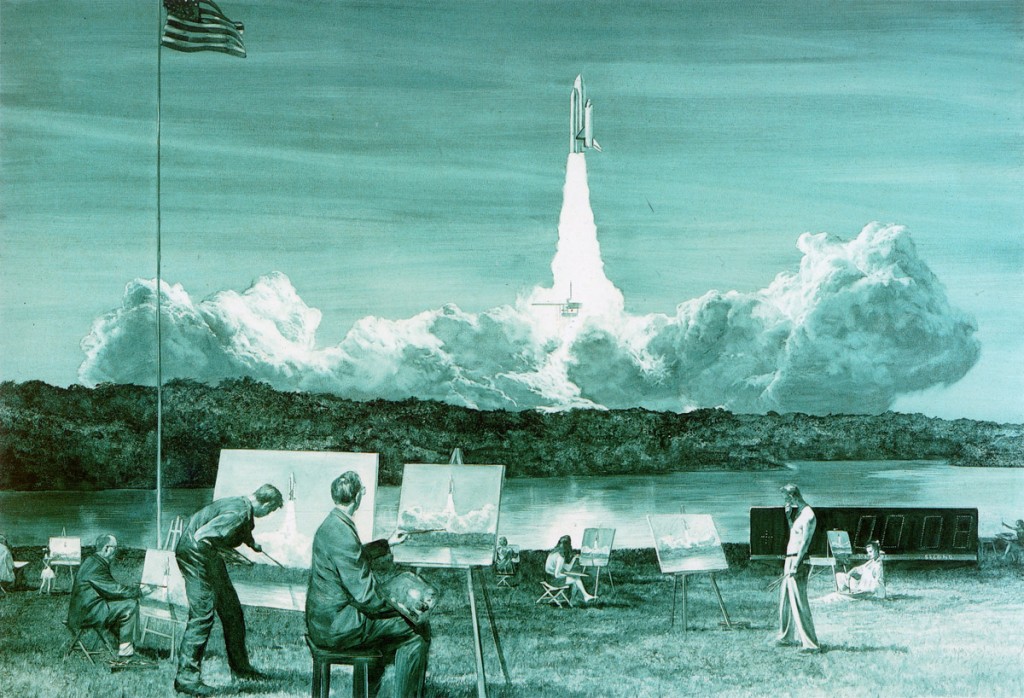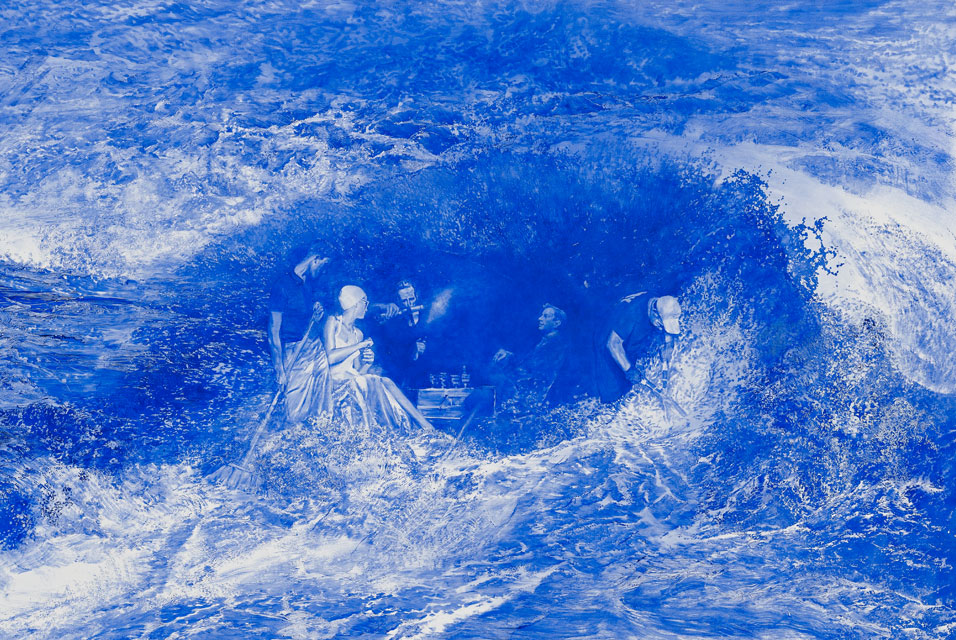Mark Tansey on Illustration
Mark Tansey is an American painter whose work is usually considered within the context of realist representationalism, but goes beyond that into a sort of hypercritical allegorical mode strongly informed by art history, philosophy, and art theory.

Mark Tansey, Action Painting II, 1984, Oil on canvas, 193 x 279.4 cm, Collection of the Montreal Musée des Beaux-Arts
I really enjoy the his work-as-objects, but I must admit that the thought that goes into his work is what makes me think of him as truly exceptional. A deep thinker, this one.
For instance, his thoughts on the importance of illustration via Artchive :
If in paintings there have been problems in linking image and idea, one key may be found buried deep in the practice of illustration. Illustration, having been banished from high art as commercial and slavish to an assigned message, nevertheless is where art begins. The only significant difference that I can find at this point between illustration and art is that the former traditionally involves doing someone else’s idea rather than one’s own. But of particular value in good illustration is the function of embedding the idea in the image. It’s common practice in contemporary art to rely heavily on critical supplements to provide the conceptual content. But in illustration, the critical content and image can be structured together metaphorically. This involves the invention or search for a new metaphoric structure that acts as a transformational link between the idea and image. For instance, reflection, as metaphoric structure, can link the idea of equivalence of opposites to an image where an object and its reflection are interchangeable. Mont Sainte Victoire is an example of this.
Another value of illustration is its hyperfictional capacity. Because it is rhetorically out front, it has great latitude of reference and freedom to extend or condense space and time. It is not paralyzed with guilt about the impurities of reference or of metaphor. On the contrary, new metaphoric relations are its substance and aesthetic vehicle. It’s at the door of metaphor that illustration transforms into “metaphoric redescription.” Metaphoric redescription (Richard Rorty’s term) is a function that is becoming increasingly interesting in light of the inadequacies of the term “representation,” in that pictures don’t actually represent anything.
– Mark Tansey: Visions and Revisions Arthur C. Danto

Mark Tansey, Recourse, 2011. Oil on canvas, 65 x 99 “



I love that piece he did – the something’s Daughter??? I can never remember…
He’s awesome.
The Bricoleur’s Daughter – http://www.artchive.com/artchive/t/tansey/tansey_bricoleurs.jpg.html – one of my favourites, too.
“The bricoleur’s daughter plays at the boundary of the upper Platonic and lower labyrinthian world of webs and nets. Tansey summarizes the horizon dividing the painting: “Above the table I see the realm of Plato’s cave and below it the ambiguous attributes – the spurs, webs, and fabrics – of Derrida’s ‘Spurs’. Plato’s tools are above and Derrida’s weapons are below”. Bridging the worlds of Plato and Derrida, the young girl creates shadowy images by casting a light on cans of paintbrushes that look suspiciously like a Jasper Johns sculpture. As the artist’s studio becomes a cave, culture is transformed into nature – or at least the image of it.” – “The Picture in Question: Mark Tansey and the ends of Representation”, Mark C. Taylor
[…] a bit of Mark Tansey’s obsession with art history & art theory, a bit of the playfulness of pop artists like […]